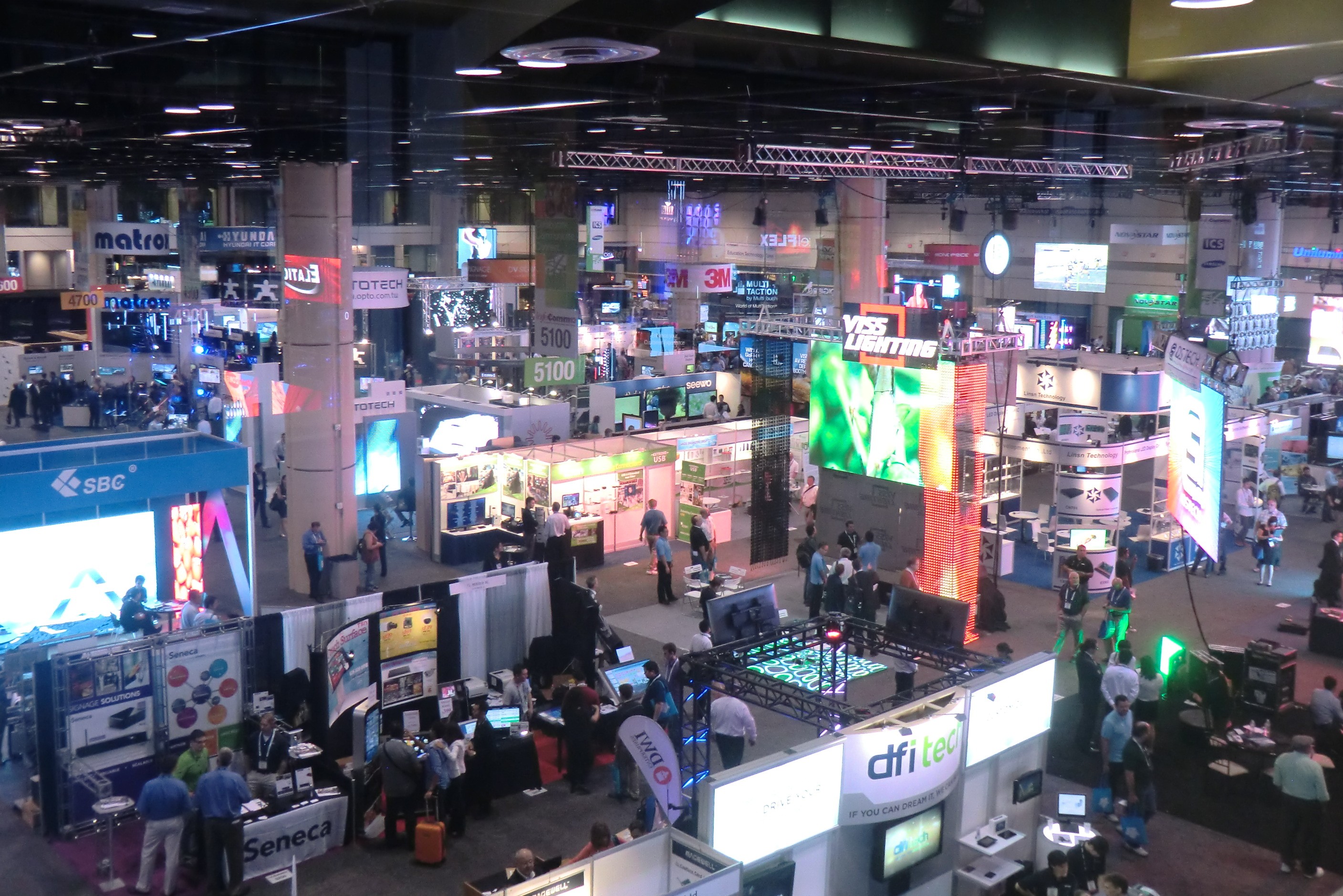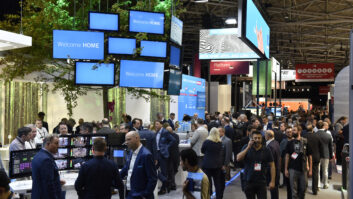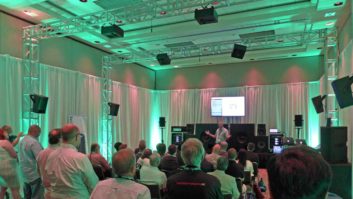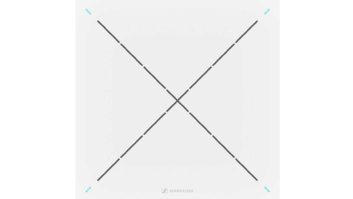
InfoComm 2015 looks set to combine its familiar strengths with some innovative new features. On the familiar side, there will be a strong representation from the audio community, with over 250 exhibitors and, of course, demo rooms. Unified communications and collaboration will also feature heavily, as will digital signage, worship technology and live events – not just on the showfloor but also on in the education programme.
Turning to the new elements of the programme: this year’s show sees more than 200 first-time InfoComm exhibitors, along with a new Innovations Showcase – so it’s certain that it won’t just be the same-old same-old on display. And, picking up on one of the hot trends in AV at the moment, there will be a Drone Zone, which will offer seminars on the use of unmanned aerial vehicles in applications beyond cinema and broadcast. Additionally, the Tech Tour and InfoComm University programmes have been refreshed for 2015.
The show is also ringing the changes with its opening keynote: rather than a presentation from a single speaker, this year the event takes the form of a thought-leadership panel on the Internet of Things. New York Times lead technology writer/reporter Nick Bilton will moderate a panel of senior executives from Cisco, Crestron, Harman and Samsung, who will talk about technologies and actionable ideas surrounding IoT, and share their views on growth potential, security and interoperability in this area.
Turning to the showfloor, over 50 exhibitors at InfoComm will be showing products featuring Audinate’s Dante networking technology. Audinate itself will be previewing its new Dante Via software application. Dante Via is a PC- and Mac-based platform that can bridge all existing soundcards, allowing a wealth of applications and devices to be networked easily and inexpensively. Any computer-connected USB, FireWire or Thunderbolt audio devices, such as local mics and interfaces, can be placed onto a Dante network, and Dante Via will even pick out audio from any networked Dante-enabled device wherever it’s routed.
Similar functionality comes from Attero Tech’s unDUSB Dante-to-USB bidirectional bridge, which is designed to integrate audio from a Windows PC or Mac into a Dante audio network. Applications include bridging audio from soft codecs like Skype or Microsoft Lync into an existing Dante audio system; or taking audio recorded on a PC or a Mac and reproducing it on a Dante audio system.
The unDUSB is powered either externally or via PoE, and can be utilised by any application that can play to or record from a USB soundcard.
Configuration capabilities for unDUSB are among the features offered by SymNet Composer 4.0, the latest version of Symetrix’ open-architecture design software for SymNet Edge and Radius Dante-scalable network audio DSPs.
SymNet Composer 4.0 also offers full support for two new control options: the newly released ARC-3 wall panel remote, which incorporates a new capacitive touch interface with LED feedback; and an upgrade to Symetrix’ ARC-WEB browser-based control interface, which adds a dialler function to allow owners of iOS devices, Android phones, tablets and PCs to conduct call dialling and command functions through their SymNet DSP, without having to rely on Crestron or AMX touchpanel modules.
Bogen Communications will introduce Model CC4062MBT, the latest model in the CC-Series of 40W compact amplifiers. The model provides seven inputs (three mic/line, one aux, one tel, a built-in media player with EQ, as well as Bluetooth source-pairing capability) and an MOH output. In addition, it offers individual phantom power for mic inputs, volume controls for each input, priority muting, bass and treble controls, and a record output.
These amplifiers are half the width of conventional amplifiers, making them suitable for installations with limited set-up space.
Revolabs will show its new FLX UC 1500 IP and USB conference phone. This USB solution lets users add two directional microphones and can bridge calls between VoIP and UC desktop applications – providing what the company says is the industry’s first all-in-one conferencing solution specifically designed for large meeting environments.
Additionally the manufacturer will be introducing wired gooseneck models to its line of wired microphones. Available in 6in and 12in variants, the goosenecks come in the same colours – black, white, and brushed nickel – as the company’s directional and omnidirectional wired microphones.
New from beyerdynamic will be a range of vertical array microphones. The vertical array construction gives a horizontal corridor (horizontally cardioid, vertically lobed), offering users increased freedom of movement to the left and right. It is also possible for a mic to be shared by two participants, or by several people during videoconferences. Gain before feedback is optimised for ceiling systems.
These new Revoluto microphones (from the Classis RM 30/31 series) are available as installation mics and as mic units for the Orbis conference system. Both variants make optimum use of the benefits of the Revoluto technology, and products with horizontal or vertical arrays can be used depending on the request for design, room acoustics and PA system. In this way different situations and customer requests can be met.
InfoComm will see the US debut of Redline, a family of powered loudspeakers from EAW. Launched in Europe at Prolight+Sound, the Redline family consists of two powered two-way loudspeakers – the RL12 (12in) and RL15 (15in) – along with the RL18S 18in powered subwoofer.
The RL12 and RL15 are said to offer consistent directivity via beamwidth-matched crossovers on 90º x 60º user-rotatable horns. Four-aperture ports provide massive bass support with no turbulence while maximising transducer-cooling air flow for reliability. The self-powered loudspeakers feature 1,250W of fanless Class D power factor-corrected amplification. The RL18S subwoofer is cardioid-ready via simple rear-panel controls, enabling users to achieve high levels of low-frequency control without using complex processing or calculations.







